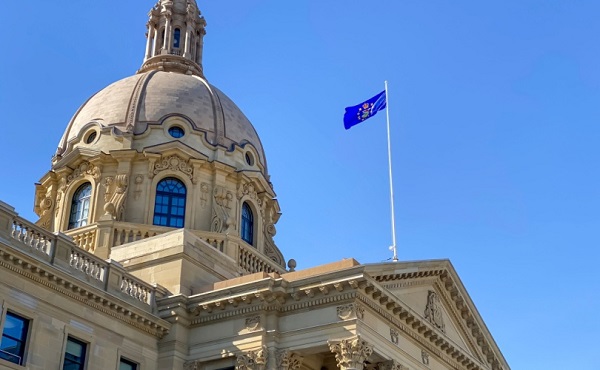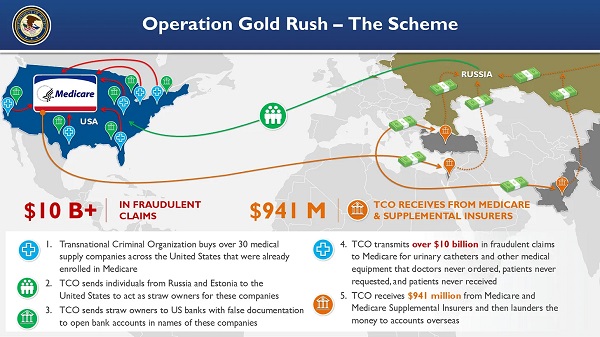Economy
Trudeau’s Economic Mismanagement Exposed: GDP Report Reveals Alarming Decline in Canadian Prosperity
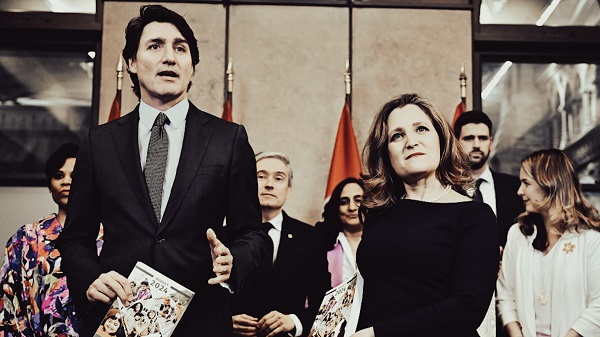
The latest “Gross Domestic Product, Income, and Expenditure: Third Quarter 2024” report highlights six consecutive declines in GDP per capita & collapsing business investment
Good evening my fellow Canadians, and welcome to the final chapter of Canada as a thriving economy, brought to you courtesy of Justin Trudeau. The latest GDP report isn’t just a spreadsheet of bad news—it’s a grim look at the devastation Trudeau has unleashed on Canada’s economy.
Here’s what they won’t tell you: while Trudeau prances around on the world stage, preaching about climate change and “equity,” the average Canadian is getting poorer. GDP per capita—one of the most telling measures of prosperity—has now declined for six consecutive quarters, hitting levels not seen since 2017. Let that sink in. Under Trudeau’s leadership, Canadians are worse off today than they were seven years ago.
Canada’s GDP Growth: A Sluggish Economy Falling Behind
The latest figures from Statistics Canada’s Gross Domestic Product, Income, and Expenditure: Third Quarter 2024 report show an economy struggling to find its footing. Real GDP grew by 0.3% in Q3 2024, a slowdown from the 0.5% growth in the first and second quarters of the year. On an annual basis, GDP growth for 2023 was a modest 1.1%, further highlighting Canada’s weak economic momentum.
In real terms, Canada’s GDP as of Q3 2024 stands at $2,419,572 million (chained 2017 dollars). While the economy continues to expand, this growth pales in comparison to the nation’s surging population.
GDP Per Capita Declines: A Warning Sign for Canadians
Canada’s economic growth is not keeping pace with its rapid population expansion. In Q3 2024, GDP per capita—arguably the most important measure of economic health—declined by 0.4%, marking the sixth consecutive quarterly drop. With a staggering 3.2% population growth in 2023, Canada’s economy cannot sustain the same level of prosperity for its citizens.
Current GDP per capita is estimated at ~$54,000, down from its pre-pandemic high of ~$58,100 in 2017, and 2.5% below 2019 levels. To return to its long-term trend, GDP per capita would need to grow at an ambitious 1.7% annually for the next decade, a rate well above the recent average of just 1.1% per year since 1981.
Historical Context: Long-Term Prosperity Eroded
The report shows a troubling trajectory in inflation-adjusted GDP per capita over decades:
- 1981: ~$36,900
- 2017: ~$58,100
- 2024: ~$54,000 (estimated due to consecutive declines).
Despite Canada’s resource wealth and economic potential, GDP per capita remains 7% below its historical growth trend, signaling systemic productivity and investment issues.
Key Drivers of GDP Growth in Q3 2024
The Q3 2024 report highlights the components influencing GDP growth:
- Household Spending: +0.9%
- Government Spending: +1.1%
- Business Investment in Machinery and Equipment: -7.8%
- Exports: -0.3%
- Imports: -0.1%
While household and government expenditures provided some lift, the steep decline in business investment—down nearly 8%—and weaker exports reveal structural weaknesses in Canada’s economic model.
A Warning for the Future
These numbers tell a grim story: Canada’s economic growth, when adjusted for its population explosion, is failing to provide real benefits to its citizens. GDP per capita declines, stagnant productivity, and plummeting business investment highlight the challenges ahead. Without dramatic improvements in productivity, competitiveness, and fiscal policy, Canada’s long-term economic prospects remain precarious.
Trudeau’s Population Bomb
In 2023, Canada’s population grew by a jaw-dropping 3.2%, adding over 1.27 million people—the size of Calgary—in just one year. Trudeau’s open-door immigration policy is out of control. But here’s the kicker: the economy isn’t keeping up. GDP growth is crawling at 0.3%, while GDP per capita—the number that actually reflects living standards—has fallen 2.5% below pre-pandemic levels.
What does this mean? Trudeau is creating a country where there are more people, but less wealth to go around. He’s importing voters for his political base while ignoring the basic economics of supply and demand. More people mean more pressure on housing, healthcare, and infrastructure—all of which are already in crisis. Trudeau gets the photo ops, and Canadians get poorer.
Productivity? What’s That?
Here’s the real scandal: Canada’s productivity is collapsing, and Trudeau couldn’t care less. Business investment in machinery and equipment—a cornerstone of economic growth—dropped 7.8% in Q3 2024. That’s not a blip. It’s part of a long-term trend.
Under Trudeau, Canada has become hostile to business. With punishing taxes, endless red tape, and policies designed to appease radical activists, companies have stopped investing. They’re pulling back because they see no future in a country run by a trust-fund prime minister who treats the economy like his personal virtue-signaling playground.
Exports Collapse, Government Spending Soars
Exports fell 0.3% this quarter, after a 1.4% drop the quarter before. That’s Canada losing its competitive edge, plain and simple. While Trudeau waxes poetic about “green transitions,” other countries are eating Canada’s lunch.
Meanwhile, Trudeau’s solution to every problem is predictable: throw money at it. Government spending rose 1.1% in Q3 2024, marking the third consecutive quarterly increase. But this isn’t investment—it’s waste. It’s billions spent on flashy programs that do nothing to address Canada’s fundamental economic problems.
The OECD Warning Trudeau Ignores
Here’s a fact Trudeau won’t tweet about: The Organization for Economic Co-operation and Development (OECD) projects that Canada will have the lowest GDP per capita growth of all member countries through 2060. That’s Trudeau’s legacy: turning Canada into the slowest-growing economy in the developed world.
This isn’t just incompetence—it’s deliberate. Trudeau’s agenda isn’t about making Canada prosperous; it’s about centralizing power. His policies crush the middle class, drive businesses out, and create dependence on government handouts.
The Final Verdict
Justin Trudeau has managed to take one of the most resource-rich, opportunity-filled countries in the world and drive it into economic stagnation. He’s turned Canada into a welfare state for the many and a playground for the elite. GDP per capita is falling, productivity is collapsing, and the future looks bleak for ordinary Canadians.
Let’s be clear: Trudeau doesn’t care. As long as he’s jet-setting to global conferences, virtue-signaling about climate justice, and securing his legacy as the darling of the global elite, the suffering of everyday Canadians is irrelevant to him.
Canada deserves better. It deserves leadership that values hard work, economic freedom, and the dignity of a prosperous nation. And until Trudeau is gone, don’t expect any of that.
Subscribe to The Opposition with Dan Knight .
For the full experience, upgrade your subscription.
Automotive
Federal government should swiftly axe foolish EV mandate

From the Fraser Institute
Two recent events exemplify the fundamental irrationality that is Canada’s electric vehicle (EV) policy.
First, the Carney government re-committed to Justin Trudeau’s EV transition mandate that by 2035 all (that’s 100 per cent) of new car sales in Canada consist of “zero emission vehicles” including battery EVs, plug-in hybrid EVs and fuel-cell powered vehicles (which are virtually non-existent in today’s market). This policy has been a foolish idea since inception. The mass of car-buyers in Canada showed little desire to buy them in 2022, when the government announced the plan, and they still don’t want them.
Second, President Trump’s “Big Beautiful” budget bill has slashed taxpayer subsidies for buying new and used EVs, ended federal support for EV charging stations, and limited the ability of states to use fuel standards to force EVs onto the sales lot. Of course, Canada should not craft policy to simply match U.S. policy, but in light of policy changes south of the border Canadian policymakers would be wise to give their own EV policies a rethink.
And in this case, a rethink—that is, scrapping Ottawa’s mandate—would only benefit most Canadians. Indeed, most Canadians disapprove of the mandate; most do not want to buy EVs; most can’t afford to buy EVs (which are more expensive than traditional internal combustion vehicles and more expensive to insure and repair); and if they do manage to swing the cost of an EV, most will likely find it difficult to find public charging stations.
Also, consider this. Globally, the mining sector likely lacks the ability to keep up with the supply of metals needed to produce EVs and satisfy government mandates like we have in Canada, potentially further driving up production costs and ultimately sticker prices.
Finally, if you’re worried about losing the climate and environmental benefits of an EV transition, you should, well, not worry that much. The benefits of vehicle electrification for climate/environmental risk reduction have been oversold. In some circumstances EVs can help reduce GHG emissions—in others, they can make them worse. It depends on the fuel used to generate electricity used to charge them. And EVs have environmental negatives of their own—their fancy tires cause a lot of fine particulate pollution, one of the more harmful types of air pollution that can affect our health. And when they burst into flames (which they do with disturbing regularity) they spew toxic metals and plastics into the air with abandon.
So, to sum up in point form. Prime Minister Carney’s government has re-upped its commitment to the Trudeau-era 2035 EV mandate even while Canadians have shown for years that most don’t want to buy them. EVs don’t provide meaningful environmental benefits. They represent the worst of public policy (picking winning or losing technologies in mass markets). They are unjust (tax-robbing people who can’t afford them to subsidize those who can). And taxpayer-funded “investments” in EVs and EV-battery technology will likely be wasted in light of the diminishing U.S. market for Canadian EV tech.
If ever there was a policy so justifiably axed on its failed merits, it’s Ottawa’s EV mandate. Hopefully, the pragmatists we’ve heard much about since Carney’s election victory will acknowledge EV reality.
Economy
The stars are aligning for a new pipeline to the West Coast

From Resource Works
Mark Carney says another pipeline is “highly likely”, and that welcome news.
While attending this year’s Calgary Stampede, Prime Minister Mark Carney made it official that a new pipeline to Canada’s West Coast is “highly likely.”
While far from a guarantee, it is still great news for Canada and our energy industry. After years of projects being put on hold or cancelled, things are coming together at the perfect time for truly nation-building enterprises.
Carney’s comments at Stampede have been preceded by a number of other promising signs.
At a June meeting between Carney and the premiers in Saskatoon, Alberta Premier Danielle Smith proposed a “grand bargain” that would include a privately funded pipeline capable of moving a million barrels of oil a day, along with significant green investments.
Carney agreed with Smith’s plan, saying that Canada needed to balance economic growth with environmental responsibility.
Business and political leaders have been mostly united in calling for the federal government to speed up the building of pipelines, for economic and strategic reasons. As we know, it is very difficult to find consensus in Canada, with British Columbia Premier David Eby still reluctant to commit to another pipeline on the coast of the province.
Alberta has been actively encouraging support from the private sector to fund a new pipeline that would fulfil the goals of the Northern Gateway project, a pipeline proposed in 2008 but snuffed out by a hail of regulations under former Prime Minister Justin Trudeau.
We are in a new era, however, and we at Resource Works remarked that last month’s G7 meeting in Kananaskis could prove to be a pivotal moment in the history of Canadian energy. An Ipsos poll found that Canada was the most favoured nation for supplying oil in the G7, and our potential as an energy superpower has never been more important for the democratic world, given the instability caused by Russia and other autocratic energy powers.
Because of this shifting, uncertain global climate, Canadian oil and gas are more attractive than ever, and diversifying our exports beyond the United States has become a necessity in the wake of Donald Trump’s regime of tariffs on Canada and other friendly countries.
It has jolted Canadian political leaders into action, and the premiers are all on board with strengthening our economic independence and trade diversification, even if not all agree on what that should look like.
Two premiers who have found common ground are Danielle Smith and Ontario Premier Doug Ford. After meeting at Stampede, the pair signed two memorandums of understanding to collaborate on studying an energy corridor and other infrastructure to boost interprovincial trade. This included the possibility of an eastward-bound pipeline to Ontario ports for shipping abroad.
Ford explicitly said that “the days of relying on the United States 100 percent, those days are over.” That’s in line with Alberta’s push for new pipeline routes, especially to northwestern B.C., which are supported by Smith’s government.
On June 10, Resource Works founder and CEO Stewart Muir wrote that Canadian energy projects are a daunting endeavour, akin to a complicated jigsaw puzzle, but that getting discouraged by the complexity causes us to lose sight of the picture itself. He asserted that Canadians have to accept that messiness, not avoid it.
Prime Minister Carney has suggested he will make adjustments to existing regulations and controversial legislation like Bill C-69 and the emissions cap, all of which have slowed the development of new energy infrastructure.
This moment of alignment between Ottawa, the provinces, and other stakeholders cannot be wasted. The stars are aligning, and it will be a tragedy if we cannot take a great step into the future of our country.
-

 Fraser Institute1 day ago
Fraser Institute1 day agoBefore Trudeau average annual immigration was 617,800. Under Trudeau number skyrocketted to 1.4 million annually
-
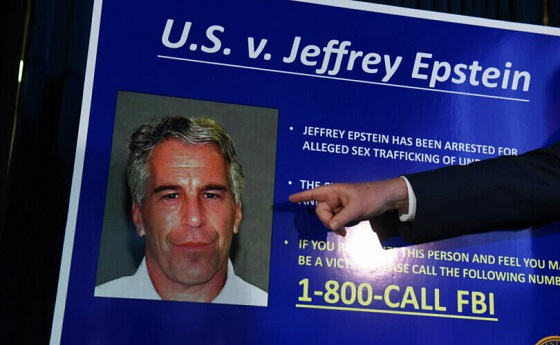
 Crime2 days ago
Crime2 days ago“This is a total fucking disaster”
-

 International2 days ago
International2 days agoChicago suburb purchases childhood home of Pope Leo XIV
-

 Daily Caller2 days ago
Daily Caller2 days ago‘I Know How These People Operate’: Fmr CIA Officer Calls BS On FBI’s New Epstein Intel
-

 MAiD2 days ago
MAiD2 days agoCanada’s euthanasia regime is already killing the disabled. It’s about to get worse
-
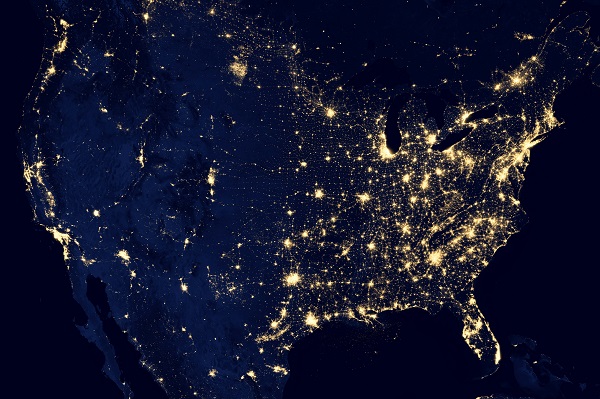
 Daily Caller2 days ago
Daily Caller2 days agoBlackouts Coming If America Continues With Biden-Era Green Frenzy, Trump Admin Warns
-

 Red Deer2 days ago
Red Deer2 days agoJoin SPARC in spreading kindness by July 14th
-

 Business1 day ago
Business1 day agoPrime minister can make good on campaign promise by reforming Canada Health Act





